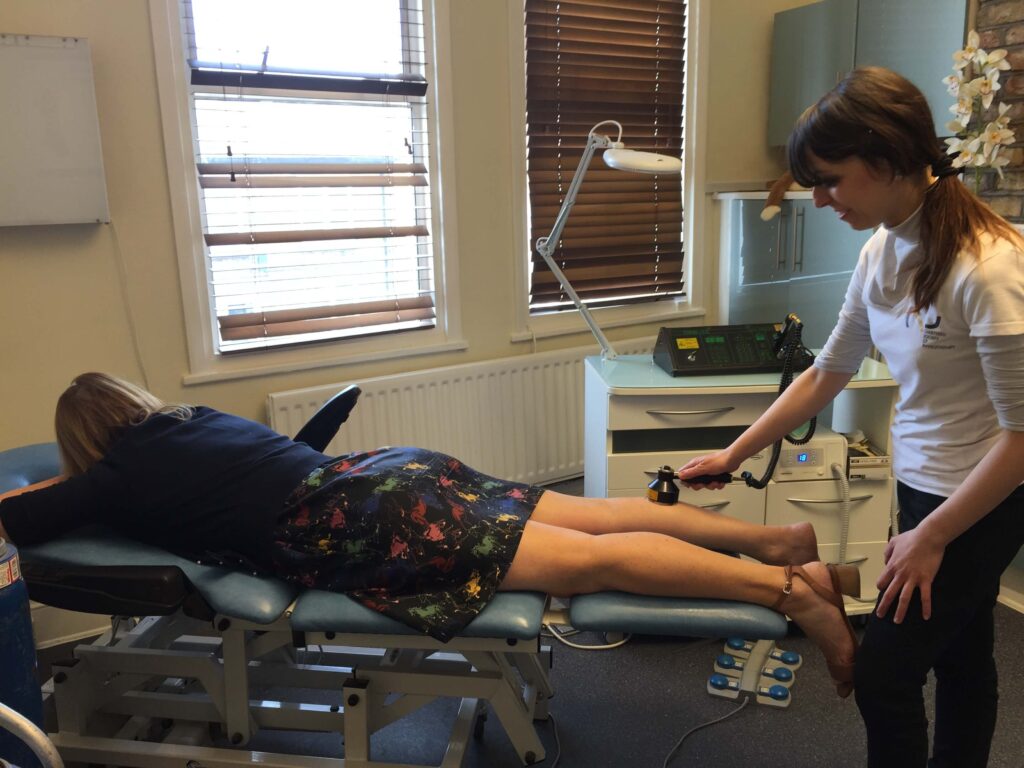Laser Therapy for Muscle and Joint Pain
What does a therapeutic laser treat?
- There is more published clinical and physiological evidence supporting the use of laser and LED photobiomodulation for soft tissue injuries and joint conditions than any electrotherapy modality as traditionally used by PT’s / physiotherapists.
- It’s considered the safest “electrotherapy” available by research experts.
- It’s quick and simple to apply.
- It can be used immediately after injury, over pins, plates and bony prominences.

A therapeutic laser is a device used for the treatment of pain and tissue repair. The laser offers a range of light frequencies and other settings, making it useful in many different situations.
A therapeutic laser is a device used for the treatment of pain and tissue repair. The laser offers a range of light frequencies and other settings, making it useful in many different situations.
Tendonitis and muscle injuries: It can be used to promote healing in Achilles tendon injuries. There are seven separate tendons that pass over the ankle joint. Laser therapy is helpful in speeding healing in tendon injury and muscular tears and in tendon ‘over-use’ syndromes.

Poor Circulation: It causes the tiny muscles in the small blood vessels to relax. This allows an increase in blood flow. It is helpful thus in treating chilblains or foot ulcers caused by poor circulation.
Nerve entrapment: The laser settings can be used to create two changes. Firstly it can reduce nerve conduction and therefore nerve pain. Secondly nerves are often trapped in scar tissue. Laser helps the scar tissue mature and shrink. Both actions are useful to help treat painful nerve entrapment syndromes, e.g. Morton’s neuroma and tarsal tunnel syndrome.

Arthritic Joints: Laser treatments to arthritic joints increase flexibility and improve circulation in the joint. This promotes the release of synovial fluid into the joint space, which eases arthritic pains.
Thor class 3B lasers
Our Thor Class 3B lasers is used to treat joint and muscular pains, ulcers and pain.
LLLT (Low Level Laser Therapy) is the application of red and near infra-red light over injuries or lesions to improve wound and soft tissue healing, reduce inflammation and give relief for both acute and chronic pain.
First developed in 1967, it is now commonly referred to as LLLT.
LLLT is used to: increase the speed, quality and tensile strength of tissue repair;resolve inflammation and relieve pain (analgesia).
The red and near infrared light (600nm-1000nm) commonly used in LLLT can be produced by laser or high intensity LEDs. The intensity of LLLT lasers and LED’s is not high like a surgical laser. There is no heating effect.
The effects of LLLT are photochemical (like photosynthesis in plants). When the correct intensity and treatment times are used, red and near infrared light reduces oxidative stress and increases ATP. This improves cell metabolism and reduce inflammation.
These effects can be enhanced with pulses. however when analgesia is required there is a second mechanism which works best when a strong continuous beam is applied.
LLLT devices are typically delivering 10mW – 500mW (0.01 -> 0.01 Watts). The power density typically ranges from 0.005W/Cm² -> 5 W/Cm². LLLT is popularly used for soft tissue injuries, joint conditions, neuropathic pain, non-healing leg and pressure ulcers.
Thor website
For more information about LLLT, visit the Thor website.
